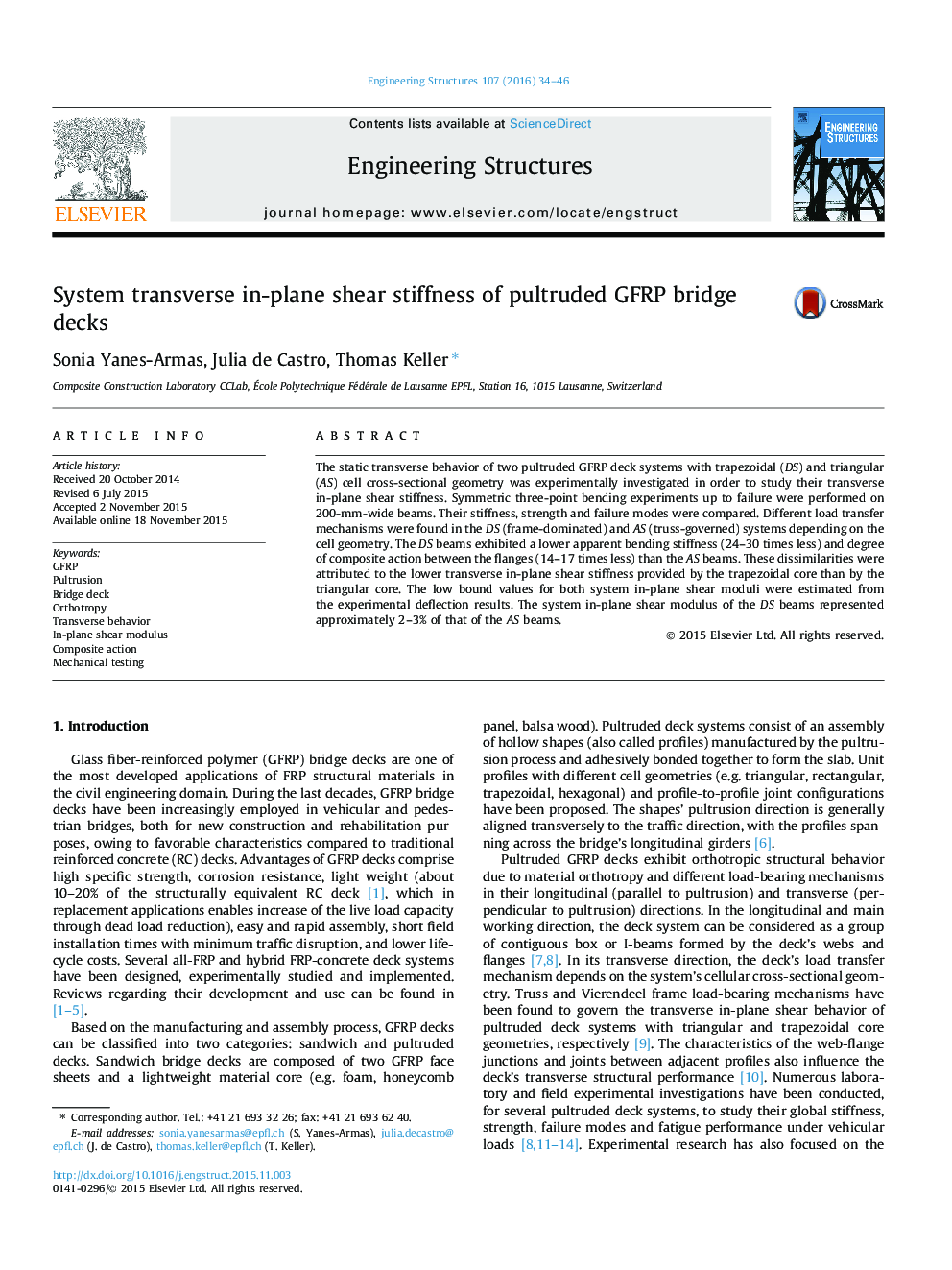| Article ID | Journal | Published Year | Pages | File Type |
|---|---|---|---|---|
| 265960 | Engineering Structures | 2016 | 13 Pages |
•The transverse behavior of two pultruded GFRP bridge decks was experimentally studied.•They exhibited different load–displacement behavior and failure mode.•The load transfer mechanisms differed and depended on the cross-sectional geometry.•The bending stiffness depended on the core geometry and system in-plane shear modulus.•The transverse system in-plane shear moduli were estimated from the load–displacement data.
The static transverse behavior of two pultruded GFRP deck systems with trapezoidal (DS) and triangular (AS) cell cross-sectional geometry was experimentally investigated in order to study their transverse in-plane shear stiffness. Symmetric three-point bending experiments up to failure were performed on 200-mm-wide beams. Their stiffness, strength and failure modes were compared. Different load transfer mechanisms were found in the DS (frame-dominated) and AS (truss-governed) systems depending on the cell geometry. The DS beams exhibited a lower apparent bending stiffness (24–30 times less) and degree of composite action between the flanges (14–17 times less) than the AS beams. These dissimilarities were attributed to the lower transverse in-plane shear stiffness provided by the trapezoidal core than by the triangular core. The low bound values for both system in-plane shear moduli were estimated from the experimental deflection results. The system in-plane shear modulus of the DS beams represented approximately 2–3% of that of the AS beams.
